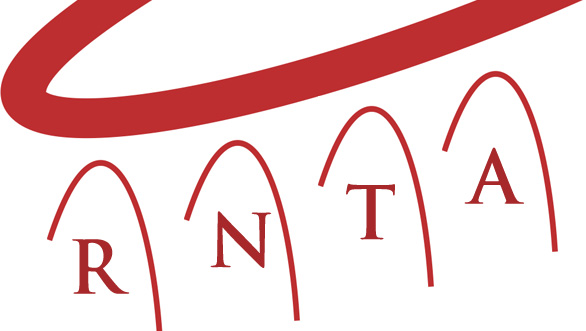On the direct problem in differential Galois theory
Lucia Di Vizio
(Université Versailles-St Quentin)
I will describe an algorithm (implemented in Maple) that
produces a system of generators of the Lie algebra of an aboslutely
irreducible linear differential equation over the rational functions
with complex coefficients.
This is a joint work with M. Barkatou, T. Cuzeau et J.-A. Weil. |
|
On exponents of class groups in towers of number Fields
Farshid Hajir
(University of Massachusetts, Amherst)
The ideal class group is simultaneously one of the most basic and one of the most mysterious objects in number theory. In particular, how the class group varies in towers of number fields presents a host of interesting questions. More than 50 years ago, Iwasawa gave a beautiful formula for the growth of the size of the $p$-part of class groups in abelian $p$-adic analytic extensions. Such extensions are always wildly ramified. We know much less about how class groups behave in unramified towers. In this lecture, I will talk about a joint work with Christian Maire in which we construct unramified $p$-towers in which the average exponent of $p$-class groups remains bounded.
|
|
Hardy-Littlewood numbers and Bessel's functions
Alessandro Languasco
(Università di Padova)
We describe a joint result with A. Zaccagnini about an explicit formula involving
non-trivial zeros of the Riemann zeta-function
for the Cesàro averaged number of representations
of a non-square integer as a sum of a prime and a square.
We'll see that Bessel's functions of complex order and real argument
play a role in such an explicit formula.
|
|
Analytic Lie extensions of number fields with cyclic fixed points and tame ramification (joint work with Farshid Hajir)
Christian Maire
(Université Franche-Comté)
In this lecture, I will present an extension of the strategy of Boston from the 90's concerning the
tame version of the Fontaine-Mazur conjecture. More precisely, we are interested in using group-theoretical information to derive
consequences for tamely ramified Galois representations, specially for the groups Sl$(n,\mathbf{Z}_p)$.
|
|
Counting constrained almost primes
Pieter Moree
(Max-Planck-Institut für Mathematik)
A natural number is called $k$-almost prime if it has
exactly $k$ prime factors, counted with multiplicity.
In my talk I consider the asymptotic counting of
such numbers (mostly with $k\le 3$) with
additional constraints put on the prime factors.
E.g., if we take $k=2$ and write
$n=pq$ with $p$ and $q$ primes of similar
size we obtain the so called RSA-integers that play
an important role in cryptography. We also consider
some examples with $k=3$ inspired by cryptography
and the study of coefficients of cyclotomic polynomials. The talk is based
on three papers with as coauthors
Decker (2008), Camburu, Ciolan, Luca
and Shparlinski (2016) and Eddin (2017).
| |
|
A rigidity theorem for translates of uniformly convergent Dirichlet series (joint work with M. Righetti)
Alberto Perelli
(Università di Genova)
It is well known that the Riemann zeta function, as well as several other $L$-functions, is universal in the strip $1/2<\sigma<1$; this is certainly not true
for $\sigma>1$. Answering a question of Bombieri and Ghosh, we give a simple characterization of the analytic functions approximable by translates of $L$-functions in
the half-plane of absolute convergence. Actually, this is a special case of a general rigidity theorem for translates of Dirichlet series in the half-plane of
uniform convergence. Our results are closely related to Bohr's equivalence theorem.
|
|
Arguments of exponential sums
René Schoof
(Università di Roma "Tor Vergata")
We prove some special cases of a conjecture involving arguments of
certain exponential sums.
|
|
Primitivity properties of points on elliptic curves
Peter Stevenhagen
(Universiteit Leiden)
Given an elliptic curve $E$ over a number field $K$ and a point $A$ in $E(K)$,
one may ask, following Lang and Trotter, for how many primes $p$ of $K$ the
point $A$ is $primitive$ at $p$, i.e., generates the point group of the
reduced curve ($E$ mod $p$).
We present a characterization, in terms of the Galois representation of $E$,
of the phenomenon of ''never-primitive points''.
|
|
Hypergeometric motives: Hodge numbers and supercongruences
Fernando Rodriguez Villegas
(ICTP)
I will discuss a conjectural connection between higher order congruences for certain finite hypergeometric sums and the Hodge numbers
of the associated hypergeometric motive. The congruences in question extend those of Dwork for the unit root of the corresponding local L-series.
|
|
Diophantine approximation of power series
Michel Waldschmidt
(Université Pierre et Marie Curie)
We give an introduction to the theory of Diophantine approximation of power series, starting with continued fractions and culminating with parametric geometry of numbers.
|
|





